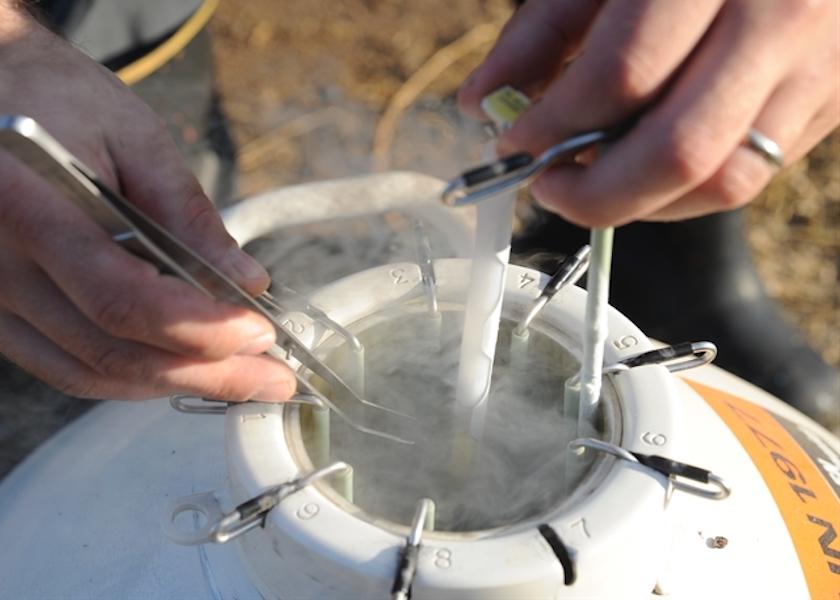Are Dairy Crossbreds Harder to Calve?

Dairy producers who use crossbreeding often cite improved fertility, health, and longevity as their main reasons for doing so.
But how does calving crossbreds compare to full-blood Holsteins? A team of researchers at the University of Minnesota recently published a study in the Journal of Dairy Science that compared calving data from thousands of cows. Specifically, they examined gestation length, calf weight, calving difficulty, and stillbirth.
The study encompassed data spanning more than a decade from two University of Minnesota research facilities. Data from the larger herd (“Herd 1”) compared 1,121 Holsteins to 1,393 crossbred animals containing Montbeliarde, Viking Red, and Holstein (MVH) genetics. The second herd (“Herd 2”) compared 476 Holsteins to 922 MVH dams and 405 Normande-Jersey-Viking Red (NJV) crossbreds.
Data were analyzed separately for first-calf heifers versus multiparous cows, but ultimately the results varied little between these two factors.
Regarding each of the four traits evaluated, results were as follows:
- Gestation length – Holsteins in both herds had 1-4 days shorter gestation length than MVH calves. When compared to NJV calves, Holstein gestation length was 2-4 days shorter.
- Calf weight – Individual birthweight for Holstein calves was lower than MVH calves in both herds. Holsteins averaged about 2.2 pounds lighter than MVH when sorted by parity. Compared to NJV dams, Holstein birth weights were 7.7 to 10.8 pounds higher, depending on parity.
- Calving difficulty – There was no significant difference in the incidence of calving difficulty among any parity or breed.
- Stillbirth – Neither parity nor breed had any bearing on the incidence of stillbirth across the study.
So, even though crossbred calves had slightly longer gestation length, and MVH calves were heavier than Holsteins, calving difficulty and stillbirth rates were not impacted by these factors.
The researchers concluded that producers can utilize 3-breed rotational crossbreeding systems without increasing risk for calving difficulty or stillbirth. They did advise making it a standard practice to record calf birth weights to manage calf growth and performance. They also said use of multiple breeds in a crossbreeding rotation is critical to maximize heterosis and minimize calving difficulty and stillbirth.
For more on genetics, read:
- Breeding the Right Cow for Robots
- Is Your Farm Ready for the Beef-on-Dairy Revolution?
- Building a Better Herd: Enacting a Genomic Game Plan







